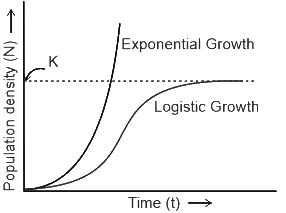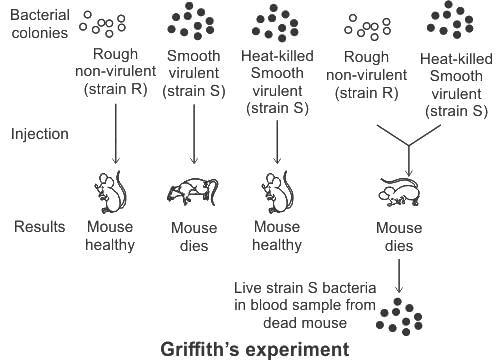Biology: CUET Mock Test - 4 - CUET MCQ
30 Questions MCQ Test CUET UG Mock Test Series 2026 - Biology: CUET Mock Test - 4
Which of the following pairs is not an example of homology?
Which of the following statements are correct with reference to evolution?
(A) About 500 mya invertabrates were formed.
(B) Jawless fish evolved around 350 mya.
(C) About 400 mya sea weeds existed.
(D) About 100 mya dinosaurs suddenly disappeared.
Choose the correct answer from the options given below:
Cells that release histamine and other vasoactive substances in response to allergens are -
Griffith's experiment on 'transforming principle' was conducted with which of the following bacteria?
What is the primary goal of the Reproductive and Child Health (RCH) program?
Which of the following is a key method for promoting reproductive health in society?
What is one major advantage of reproductive health programs?
Which of the following statements are correct?
(A) The Hershey-Chase experiment proved that DNA, not protein, is the genetic material.
(B) The RNA world hypothesis suggests that RNA was the first genetic material.
(C) The lac operon operates by positive regulation only.
(D) Translation in eukaryotes begins at the start codon (AUG) of mRNA.
(E) In eukaryotes, transcription and translation happen simultaneously in the same cellular compartment.
Choose the correct answer from the options given below:
Which of the following statements are correct?
(A) The theory of natural selection was proposed by Charles Darwin.
(B) The process of evolution only occurs through gradual changes.
(C) Fossils are important evidence supporting the theory of evolution.
(D) Adaptive radiation occurs when new species evolve from a single ancestor species.
(E) Genetic drift is the change in allele frequency due to natural selection.
Choose the correct answer from the options given below:
Which of the following statements are correct?
(A) The theory of inheritance of acquired characteristics is part of Darwin's theory of evolution.
(B) Natural selection is based on the survival and reproduction of individuals best adapted to their environment.
(C) Evolutionary change in a population can only occur through mutations.
(D) Adaptive radiation is observed when organisms evolve different traits to occupy various ecological niches.
(E) Genetic recombination during gametogenesis leads to genetic variation, which can drive evolution.
Choose the correct answer from the options given below:
Identify the parts labelled as A to F from the given diagram of human female reproductive system and select the correct option.
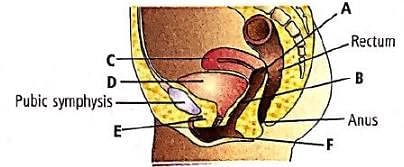
The given table shows differences between spermatogenesis and spermiogenesis. Select the incorrect option.
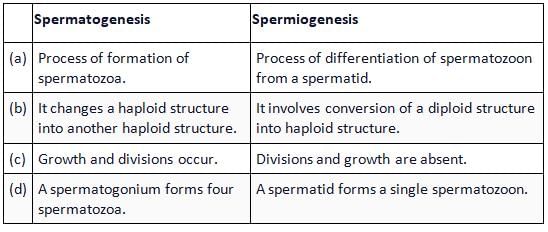
What is the correct sequence for parturition to occur?
Which of the following statements regarding antibiotics is not correct?
(i) Antibiotic is the attenuated microorganisms which in small concentrations, can kill or retard the growth of other harmful microorganisms.
(ii) Penicillin was the first antibiotic to be discovered by Alexander Fleming (1928) while working on bacterium Staphylococcus aureus.
(iii) The full potential of penicillin as an effective antibiotic was established by Ernest Chain and Howard Florey.
(iv) Fleming, Chain, and Florey were awarded the Nobel Prize in 1945.
Match column I with column II and select the correct answer from the codes given below:
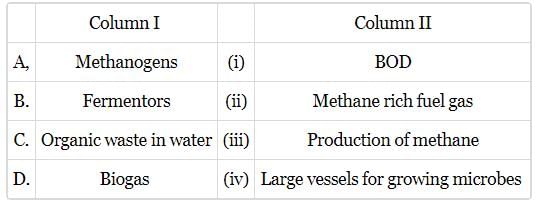
Identify A, B, C and D in the given figure of E. coli cloning vector pBR322 and select the correct option
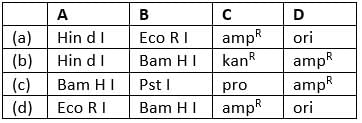
The sequence of the 5’ and 3’ primers for the following DNA sequence will be:
5’ AATGCGGCAATCGAGTC3’
3’ TTACGCCGTTAGCTCCAG5’
The process of RNA inteference has been used to made tovacco plant resistant to
In a pond, last year there were 30 lotus plants. Through reproduction, 25 new lotus plants were added in one year while 8 plants died. The birth and death rates for the lotus population respectively are ___ and ____ individuals per lotus per year.
The graph shows two types of population growth curve. A is exponential and B is logistic.
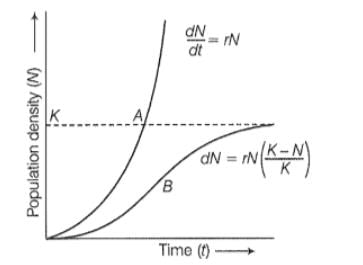
Which one of the following growth model considered as more realistic one?
Given below are two statements: (NEET 2022 Phase 1)
Statement I: Decomposition is a process in which the detritus is degraded into simpler substances by microbes.
Statement II: Decomposition is faster if the detritus is rich in lignin and chitin
In the light of the above statements, choose the correct answer from the options given below:
Which of the statements given above is/are correct?
i. India accounts for 8.1% of global species diversity despite covering only 2.4% of the world's land area.
ii. Approximately 45,000 plant species have been documented in India, along with twice as many animal species.
iii. According to global estimates, only 22% of all living species have been identified so far.
iv. It is estimated that there are less than 100,000 undiscovered plant species in India.
|
39 docs|145 tests
|




 = Rate of change of population density.
= Rate of change of population density.